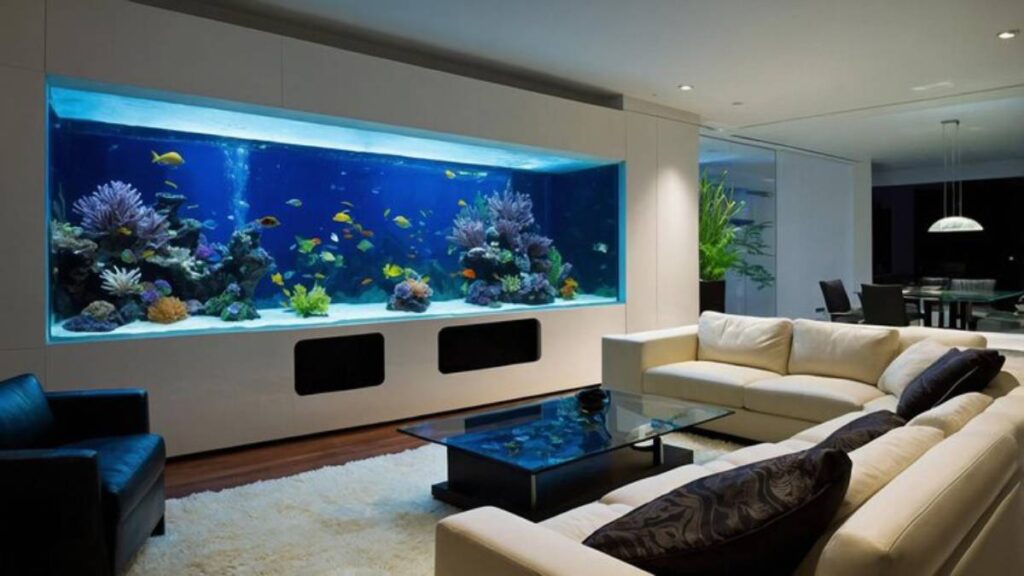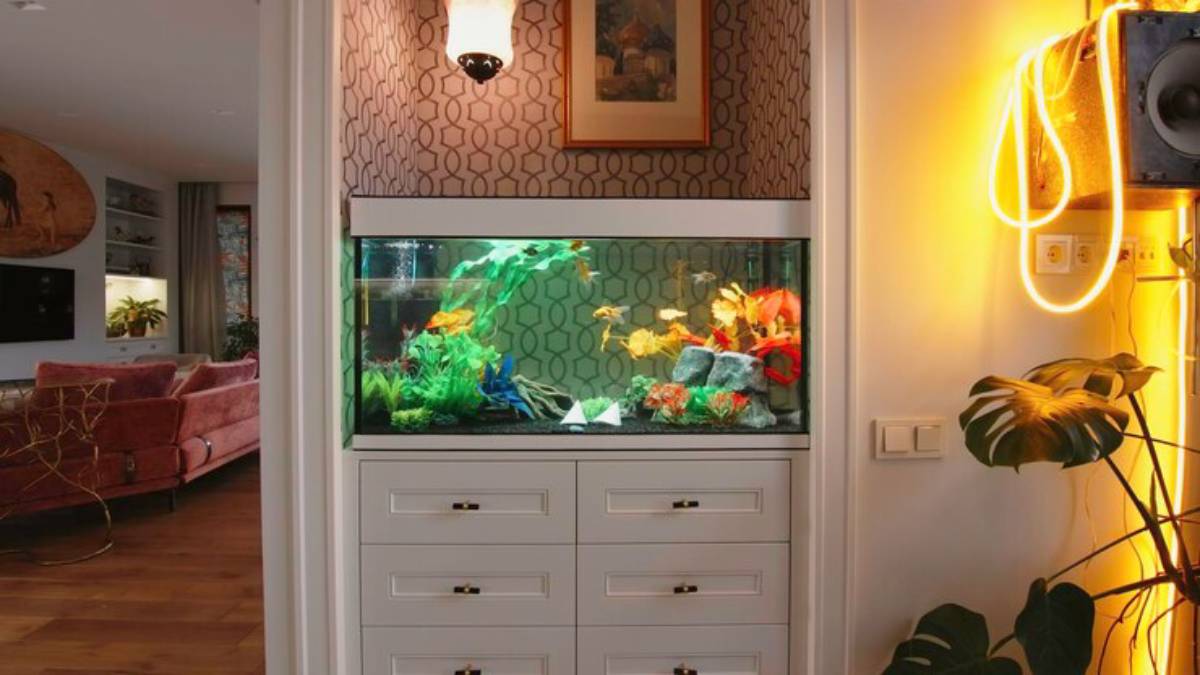The Pets Care Blog

Weight Considerations When Placing Aquariums: Plan Your Tank Setup Safely
Thinking about bringing home your first aquarium? Whether you’re picturing a small desktop betta tank or a dramatic centrepiece teeming with fish, one detail often slips through the cracks: fish tank weight. That shimmering glass rectangle might look light and lovely, but once filled with water, substrate, and decor, even a modest aquarium can weigh as much as a refrigerator.
Planning your tank placement isn’t just about finding a spot with a good view — it’s about ensuring structural safety, choosing a suitable stand, and protecting your floor and furniture. Improper placement can lead to disaster, from tipped tanks to warped flooring and, in worst cases, cracks or spills.
This guide walks you through the crucial factors of aquarium stand safety and tank placement planning, so your aquatic adventure starts on solid ground — literally. You’ll learn how to calculate tank weight, evaluate your furniture and flooring, and position your tank with peace of mind.
Why Tank Weight Planning Matters More Than You Realise
You wouldn’t set a washing machine on a flimsy bookshelf, right? Yet many new aquarists underestimate just how heavy a filled tank can be — and how quickly that weight adds up.
Consider this:
- 1 litre of water weighs roughly 1 kilogram
- A 100-litre tank = 100 kg of water, plus
- 10–15 kg of substrate (gravel or sand)
- 5–20 kg of rocks, driftwood, or decorations
- The tank itself (glass or acrylic)
All told, a modest 100-litre aquarium can exceed 130–150 kg. Larger tanks (200+ litres) can top 250–300 kg with ease — that’s as much as three adult humans.
Before committing to any tank, it’s worth reading about Choosing the Right Tank Size for Your Home to ensure it suits both your space and your structural setup.
Failing to account for this weight can cause:
- Floor damage or sagging (especially on upper levels)
- Cabinet warping or collapse
- Dangerous tipping or shifting
- Water spills from unstable stands
Calculating the Total Weight of Your Aquarium Setup
To plan responsibly, you’ll want to estimate your tank’s full weight before placing it. Use this formula.
Tank Volume (litres) × 1 kg = Water Weight + Weight of Substrate, Rocks, Décor & Equipment + Tank and Stand Weight
Example (100-litre aquarium):

- Water: 100 kg
- Substrate: 10 kg
- Décor: 15 kg
- Glass Tank: 15 kg
- Stand: 20 kg Total: ~160 kg
For irregular tanks or unusual setups (like marine tanks with heavy live rock), estimate on the higher side for safety.
Choosing a Safe and Suitable Aquarium Stand
One of the biggest mistakes beginners make is placing tanks on regular furniture — bookshelves, desks, or chests of drawers. While these may look sturdy, they’re rarely designed to handle the static, concentrated weight of an aquarium over time.
Qualities of a safe aquarium stand:
- Load-rated to hold at least 1.5× the full tank weight
- Perfectly level surface with no warping
- Water-resistant material to avoid rot or swelling
- Solid centre support — especially on larger tanks
- Back support to prevent tipping
Suitable options:
- Manufacturer-made aquarium cabinets
- Custom-built or reinforced wood/metal stands
- Sturdy metal shelving (rated for weight)
Avoid any furniture with:
- Thin particleboard
- No central reinforcement
- Plastic feet or legs
- Drawers or hollow voids beneath the tank
It’s not just about strength — it’s about long-term safety and stability.
Best Locations in the Home for Aquarium Placement
Once you’ve chosen a secure stand, the next step in tank placement planning is choosing a safe, practical, and visually pleasing location. Not all spots in your home are equally suitable.
Safe placement priorities:
- Flat, level floors — avoid slanted or uneven surfaces
- Away from direct sunlight — prevents algae blooms and overheating
- Near power sockets — but not directly under them (for splash risk)
- Avoid high-traffic areas — like doorways or hallways
- Accessible for maintenance — you’ll need room to reach behind and above
For a full guide on why sunlight and poor placement can lead to algae and instability, check out Avoiding Sunlight: Tank Placement Mistakes to Avoid.
Flooring considerations:
- Concrete slabs (ground floors): excellent support, low risk
- Timber floors or upper levels: may require assessment, especially for tanks over 200 litres
If placing upstairs, position tanks along or near load-bearing walls and avoid centre spans between joists.
Understanding Floor Load and Weight Distribution
In rare cases, especially with older homes or upper floors, tank weight can exceed what the floor was designed to bear.
Floor load guidance (UK):
- Typical domestic floors: ~150 kg/m²
- Reinforced floors: ~250+ kg/m²
A 200-litre tank concentrated on a narrow stand base may stress the floor beyond its limits. To reduce the risk.
- Use a stand with a wide footprint to spread the load
- Position the tank perpendicular to the joists to distribute the weight
- Consider a floorboard support mat or a plywood base under the stand
If unsure, consult a structural engineer or contractor before placing large aquariums on upper floors.
Tanks on Cabinets and Worktops: Yes or No?
Placing smaller tanks (under 40 litres) on kitchen counters or solid desks may seem reasonable, but there are a few caveats.
Ask yourself:

- Is the furniture rated for at least 1.5× the full tank weight?
- Is it resistant to water damage or swelling?
- Is the surface completely level and stable?
If the answer to any of these is no, it’s best to reconsider.
Avoid these setups:
- Floating shelves
- Unbraced kitchen cabinets
- Hollow-core desks or IKEA-style wardrobes
Even for a 30-litre tank (~40–50 kg), the concentrated weight can deform materials over time.
Long-Term Stability: What Happens Over Months or Years?
Weight isn’t just a momentary concern. Over time, the effects of poor planning can become obvious.
Watch for:
- Bowing or warping of stand surfaces
- Increased motor noise or vibration from uneven support
- Slight leaning or shift in the tank’s position
- Floorboard sagging beneath the tank
Water is relentless. It never gets lighter, and the pressure it exerts is constant. That’s why aquarium stand safety and careful placement aren’t one-time checks — they’re investments in long-term peace of mind.
Safety Accessories to Consider
To further protect your setup and home, you can add a few extras that make a big difference.
- Rubber feet or pads: Reduce vibration and protect the flooring
- Under-tank mats: Help with levelling, especially on tile or hardwood
- Drip trays or liners: Catch splashes during maintenance
- Water alarms: Detect leaks early and send alerts
- Bracing straps: Useful for earthquake-prone areas or kids’ rooms
These small additions go a long way in reinforcing your tank’s setup against real-world challenges.
Conclusion: Secure Placement, Happy Fish, Peace of Mind
It’s easy to focus on filters, fish, and aquascaping, but none of that matters if your tank isn’t safely placed. Understanding fish tank weight, assessing your furniture and flooring, and choosing the right stand are all foundational to a successful, stress-free aquarium experience.
Proper tank placement planning protects your home, your pets, and your investment. Whether you’re starting with a 60-litre setup or eyeing a 250-litre centrepiece, placing your tank smartly ensures you’ll enjoy it without worry for years to come.
Ready to plan your setup? Measure your space, calculate your tank weight, and double-check your furniture. If you’re unsure, drop your tank size and setup idea in the comments — we’ll help you evaluate it together!









